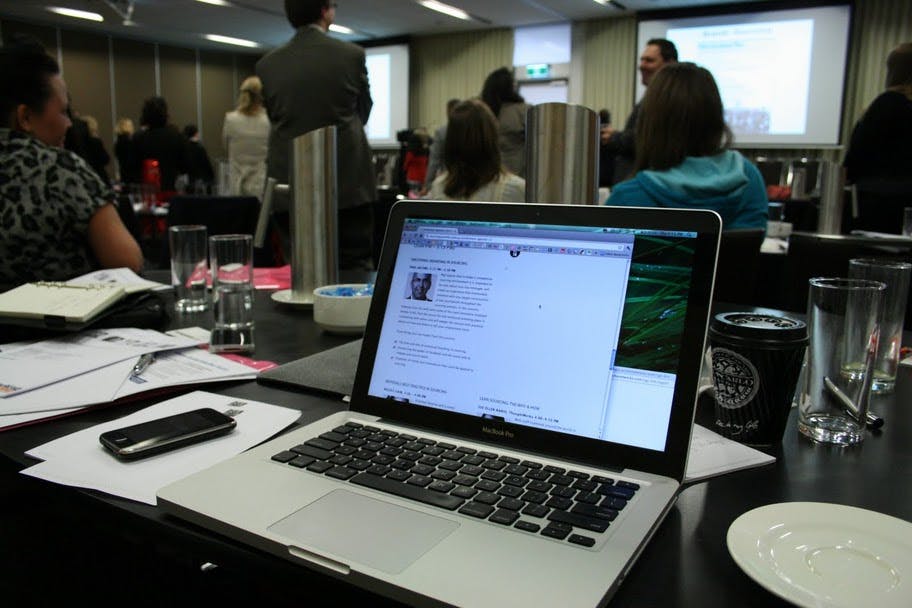In December 2007, inspired by gatherings of sourcers overseas and groups like the Association of Executive Search Consultants, I started a local group for sourcers in Australia and New Zealand. At the time, sourcing in Australia was a fairly new phenomenon. The group was set up as a place for people who loved Internet search to get together to talk about topics such as new techniques, challenges, and innovation. I also wanted to see sourcing become known as a viable career path in the recruitment industry and treated like the specialist role that it is rather than a support role.
So this year when I was approached by Phillip Tusing of Destination Talent to help him organise an event around sourcing I jumped at the chance. The industry here has grown a lot in the five years since I started working in it and there is currently quite a bit of interest in sourcing as well as some successful sourcing throughout the country.
There was a diverse range of topics covered throughout the event. Looking back I had to ask myself what do Gollum, Kanban walls, and Charlie Sheen have to do with sourcing, as they all got mentions. These topics and more are really indicative of the holistic focus the event had. More on that later…
There were a couple of presentations in particular that, when combined, seem to cover the broad range of sourcing.
Metrics
Brent Pearson from HRX talked about the importance of metrics in sourcing. One of the main things that stood out for me during this presentation is that HRX has multiple processes based on the requirements of the client, rather than sticking to one general sourcing process. Each of these processes involves creating a strategy for the project or types of roles based on assessment of the most effective sourcing channels. A major takeaway for me (Simon Townsend encouraged us to steal shamelessly) was using a grid structure or matrix to look at what channels (eg Facebook, LinkedIn, etc) to use for certain role types.
Strategic Partnerships
Christian Le Loux and Kara McLeod lifted the lid on sourcing at Ernst & Young. This was definitely a highlight for many people. Christian and Kara showed us how sourcing and employment branding teams can work together on projects like Talent Communities. E&Y have taken an interesting stance with their IT community, purposely not advertising or pushing out jobs to members. Instead, they focus on providing value in the form of events and professional development and have been able to get senior members of the E&Y team involved to present at these events. For me it was also great to see a company like E&Y be open about how they work and enabling people to learn from that.
Innovation
 Innovation is something that many of us strive for and something that I see as key to sourcing, but it can be difficult to build into your process. Simon Townsend from the Innovation team at Deloitte provided us with some guidelines:
Innovation is something that many of us strive for and something that I see as key to sourcing, but it can be difficult to build into your process. Simon Townsend from the Innovation team at Deloitte provided us with some guidelines:
- Impose strict time constraints
- Share early and often
- Rapid prototyping
- Measure everything and fail forward
- Look di?erently
He illustrated these the day before in a session on rapid prototyping, where in groups we had to design a board game using the random bits and pieces in a kit that Simon had constructed. Our next task was to play another team’s game, steal the bits we liked, change our game, and eventually pitch our ‘sourcing’ games to the rest of the room. It was an interesting challenge, but forced you to think outside the box (and inside it too).
People-Centric
Paul Jacobs from Engage in New Zealand had the entire audience on their feet, and that’s where they stayed for his entire presentation! Paul talked about emotional branding in sourcing, and at the beginning of his presentation asked everyone to go to the left or right side of the room depending on whether they though sourcing was about people or technology. The majority of the room was squarely on the people side, with a few in the middle and one or two on the technology side (I personally was with the fence-sitters in the middle of the room). Paul talked about the importance of branding sourcing, and creating an emotional connection through the messages we use to connect with potential candidates. This tied a lot of things together for me and definitely bought everyone’s thinking back to the people side of things.
Back to Gollum, Kanban walls, and Charlie Sheen. What do they have to do with sourcing? Well, the story of Gollum teaches us to beware of shiny things, or at least come at them with a healthy scepticism, as Brent reminded us. Kanban walls can be used to great effect to organise your roles and candidates such as the case study shown by Sue Ellen Nario from ThoughtWorks. And Charlie Sheen was referenced in Paul Jacobs’ presentation about ‘winning’ on Facebook. I’m not sure about Charlie, but Paul’s presentation and all the others were definitely #winning from where I was standing.
